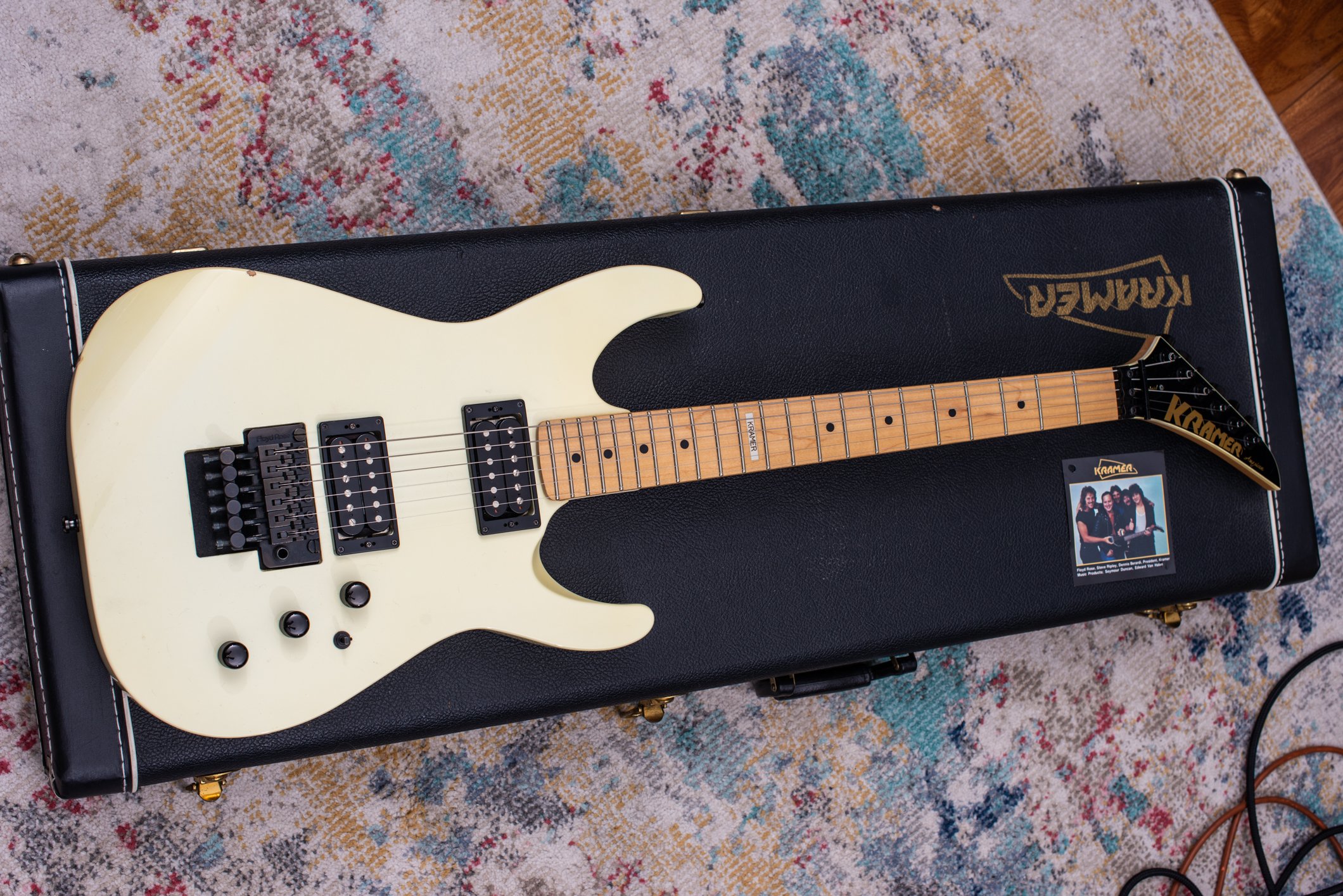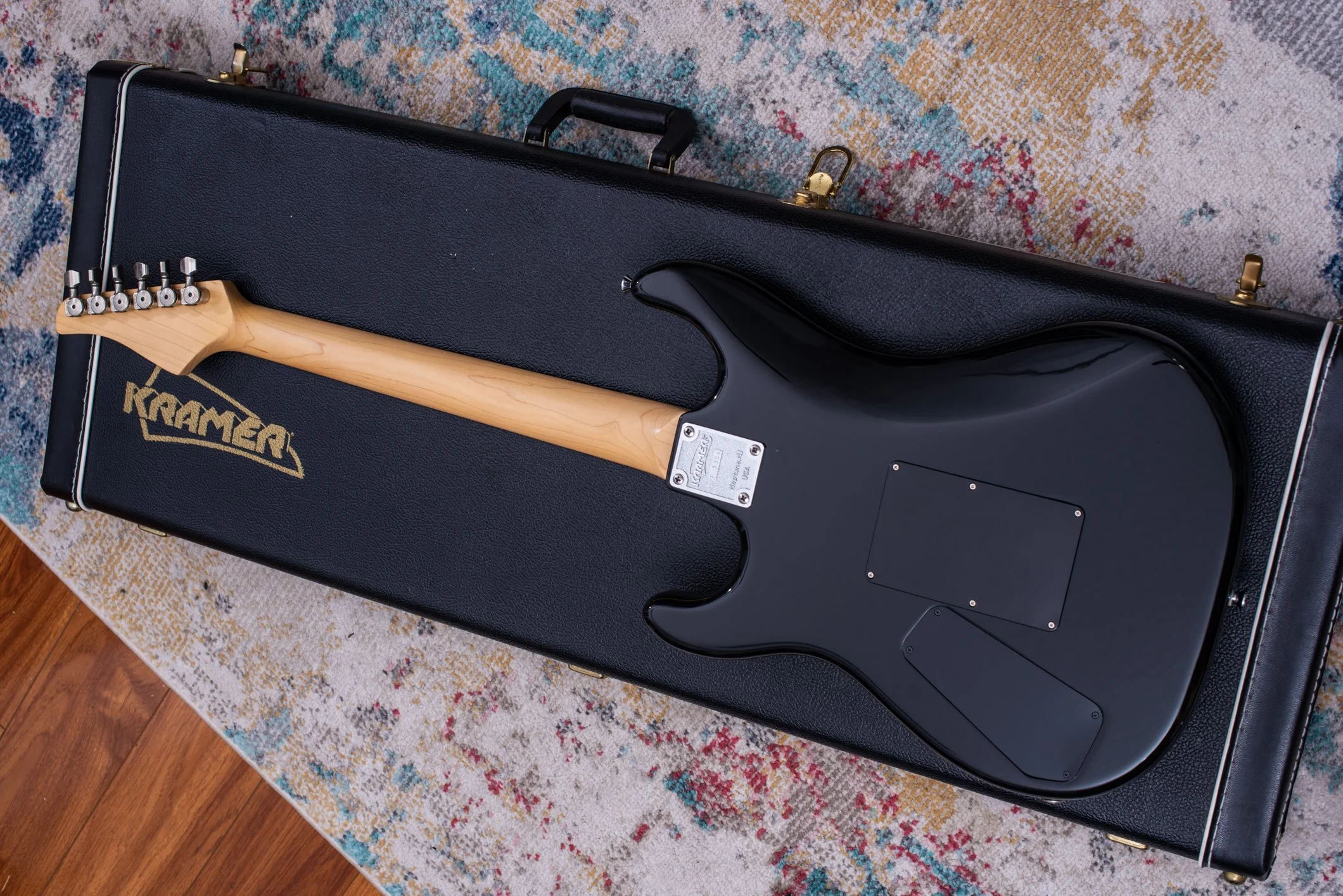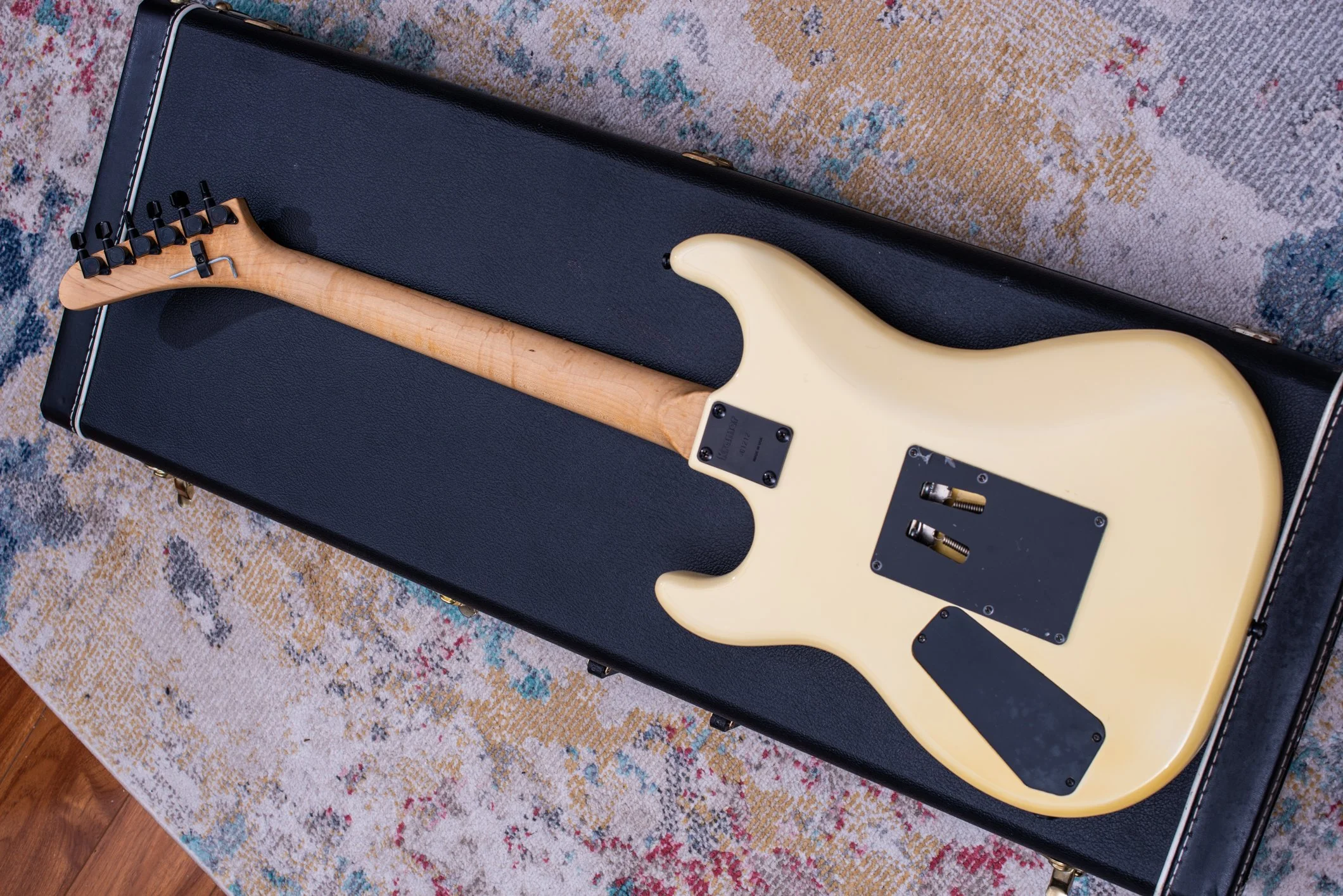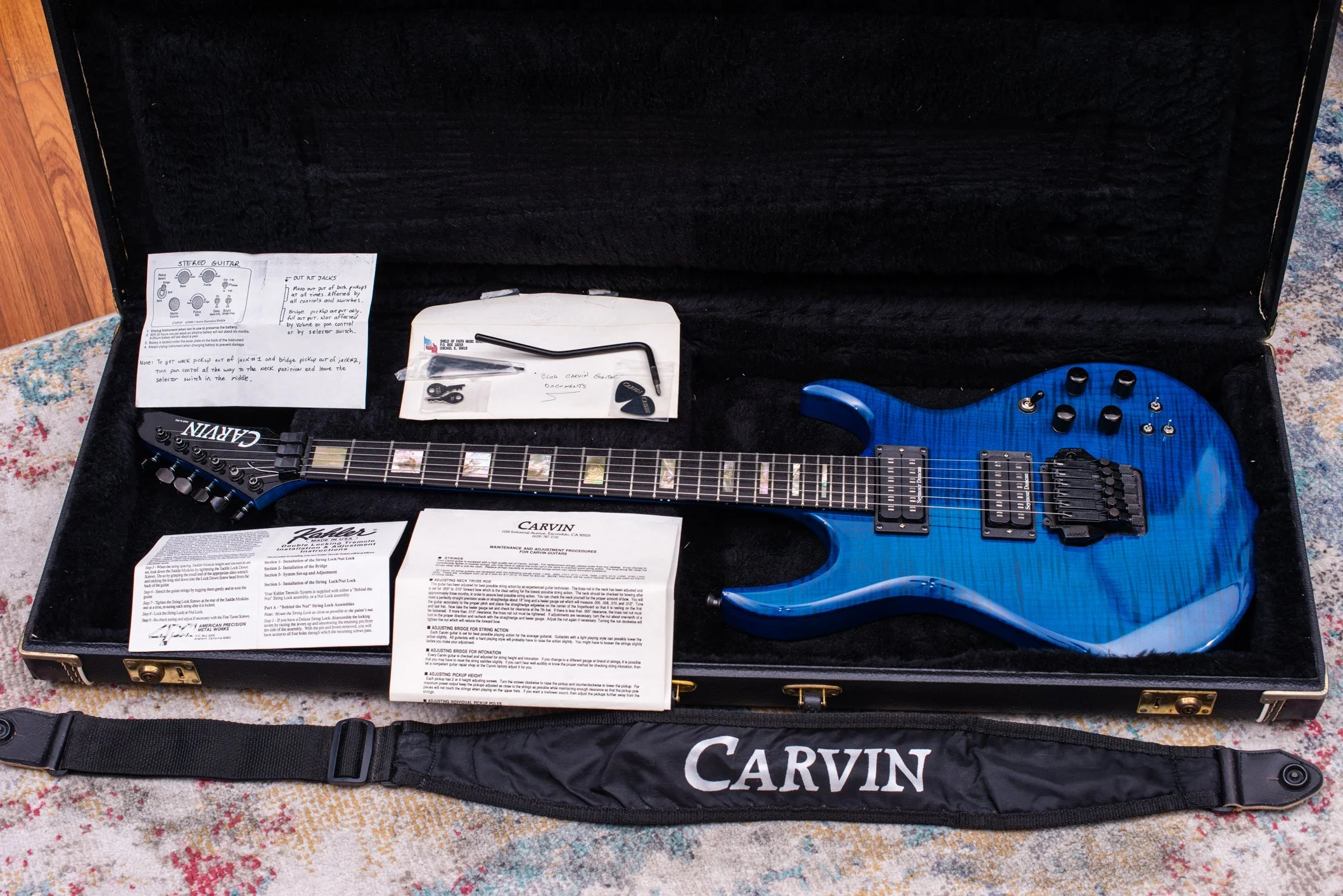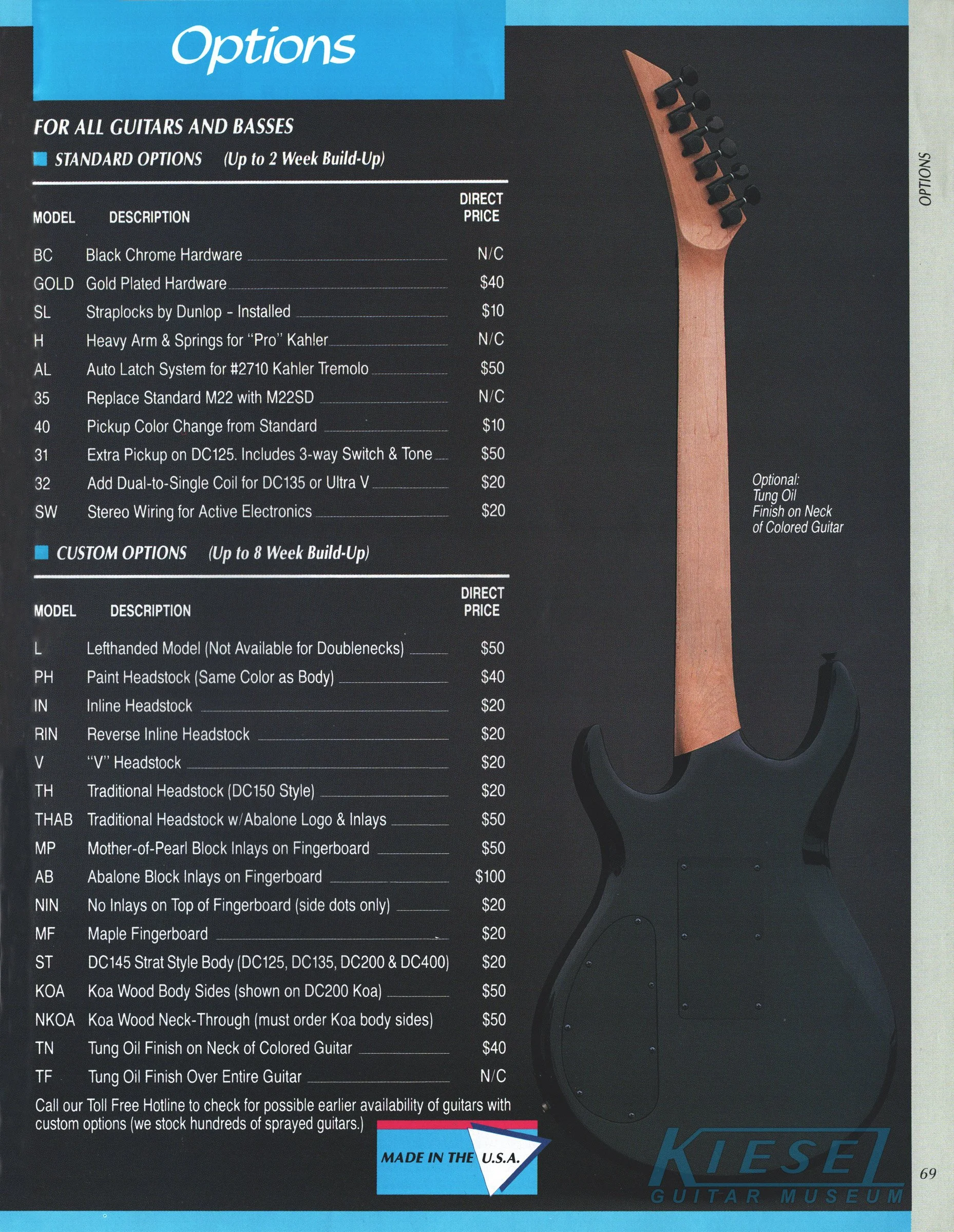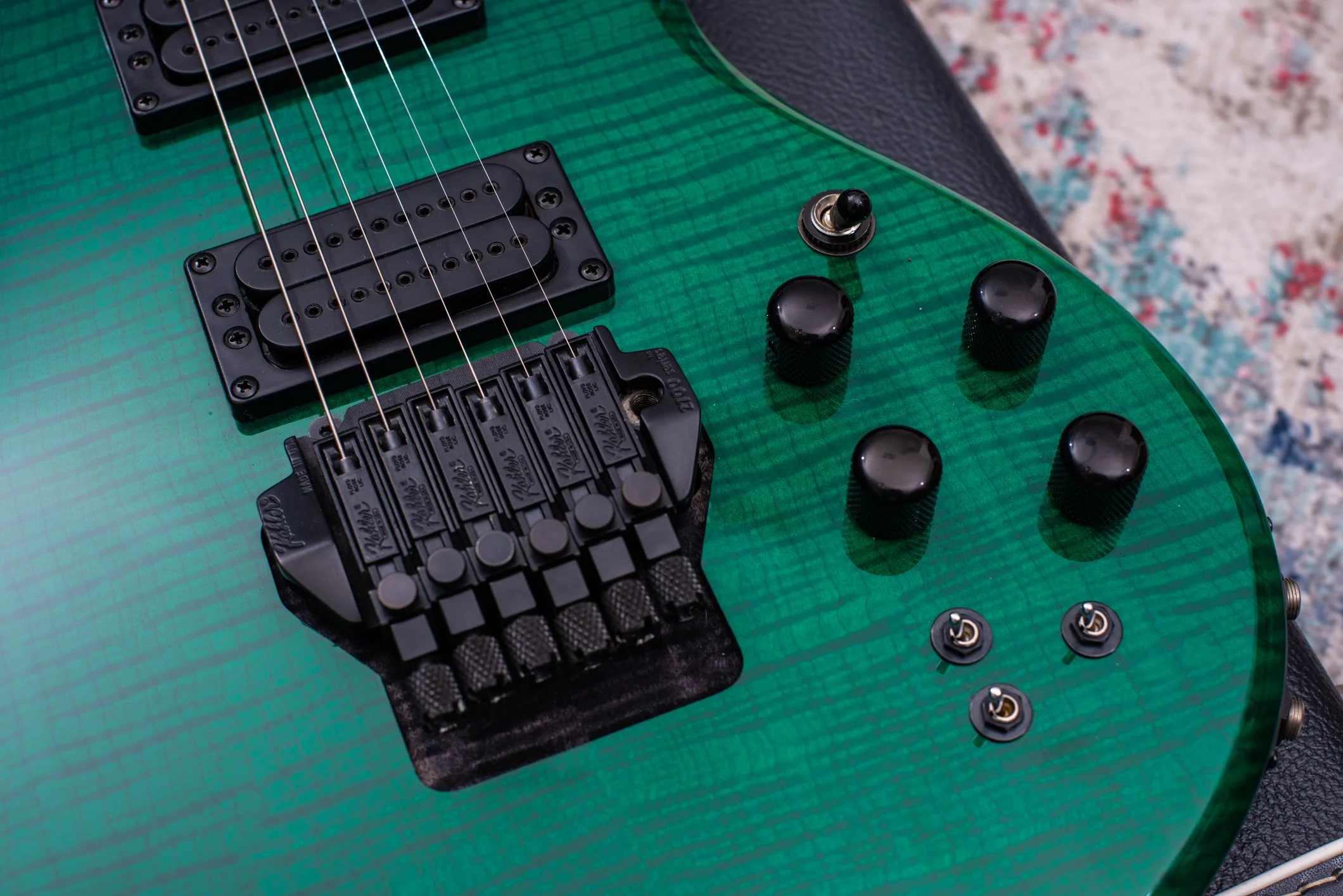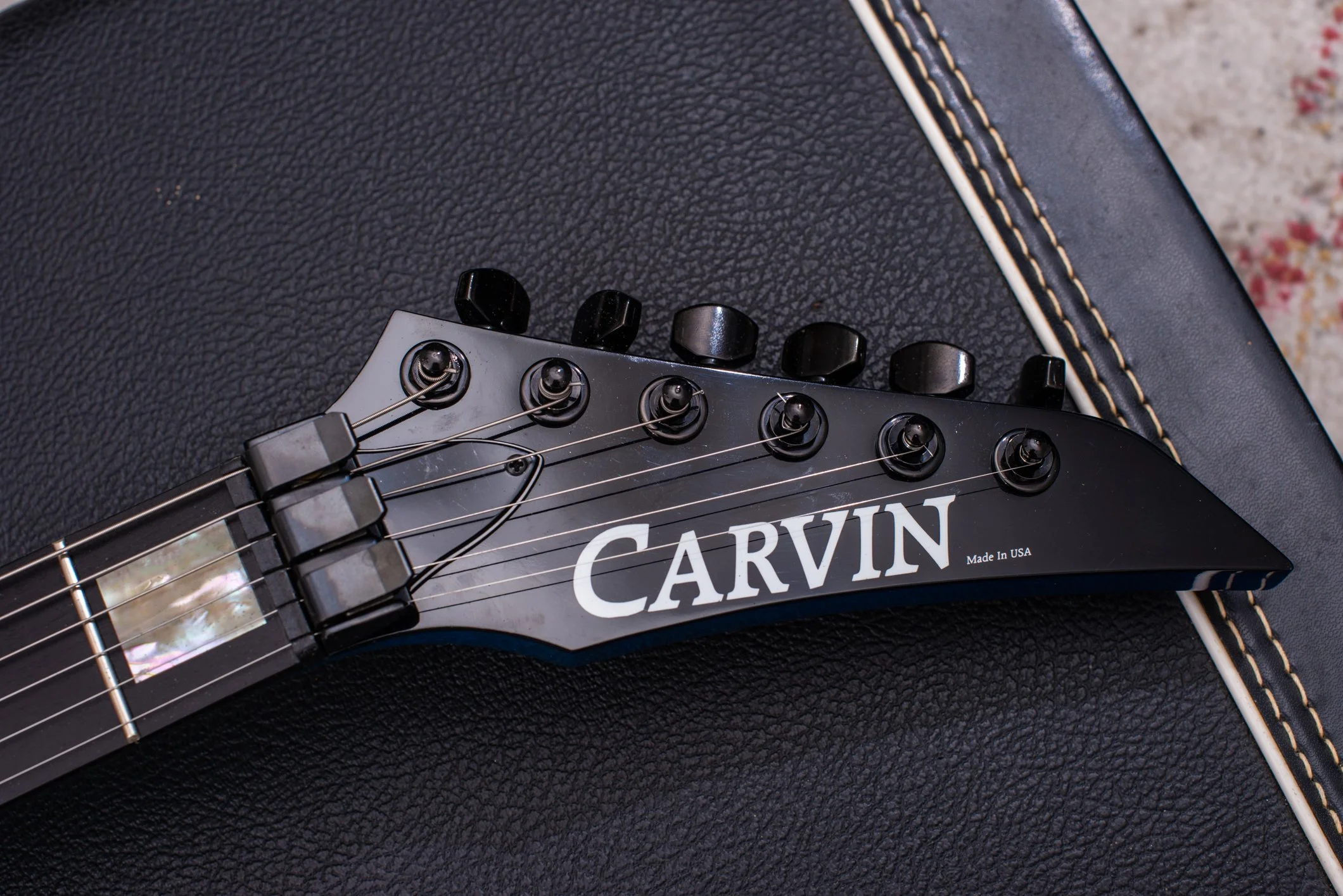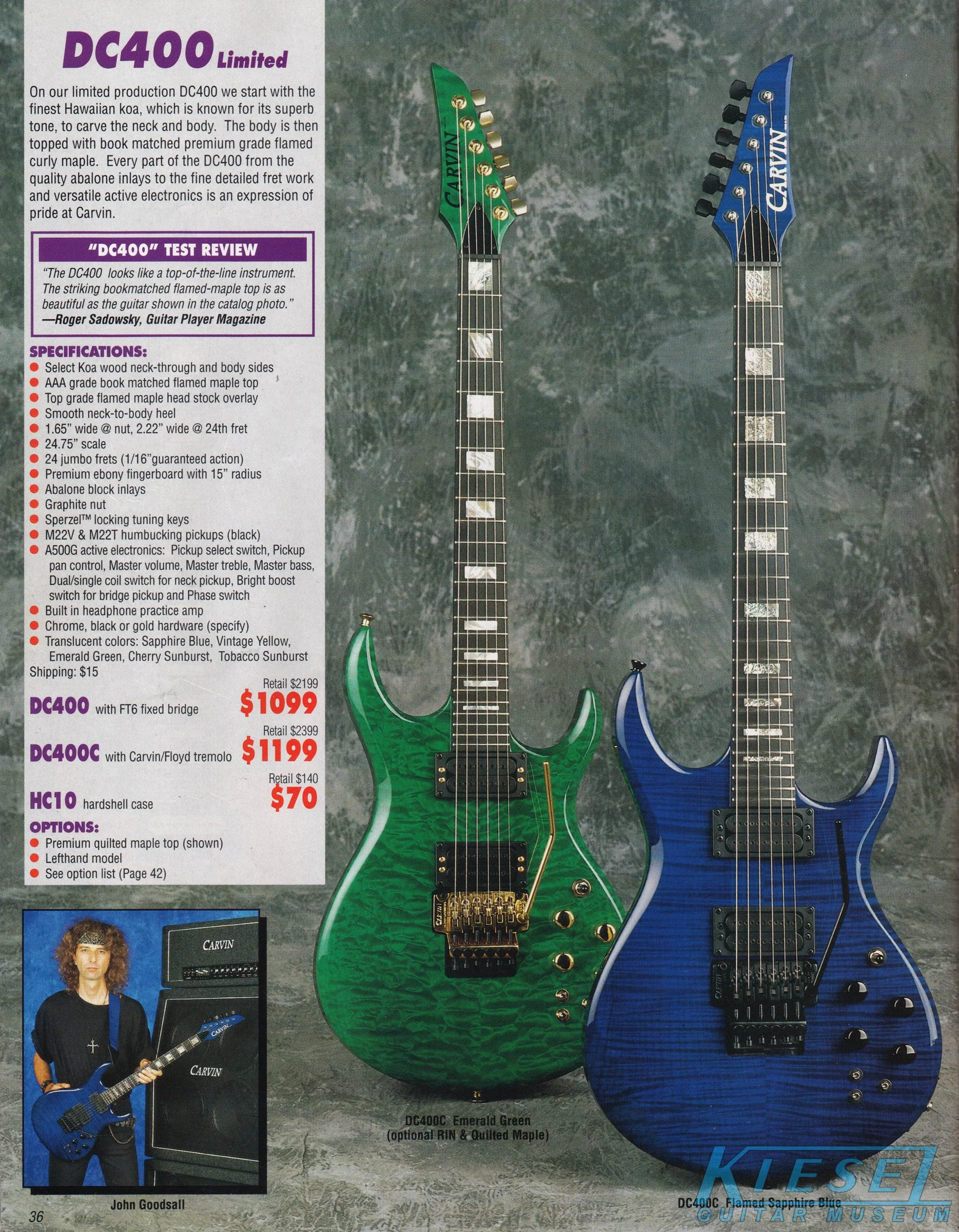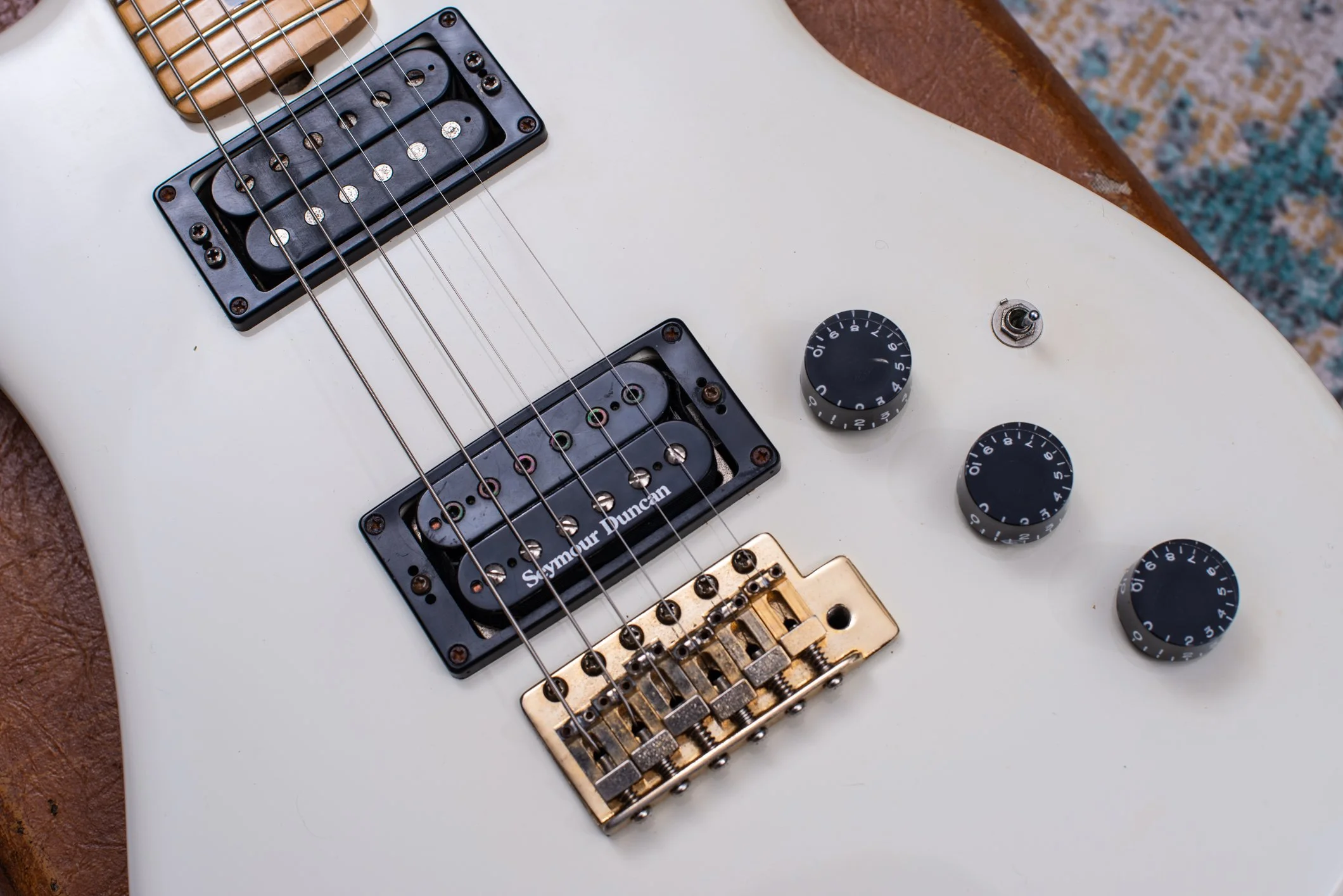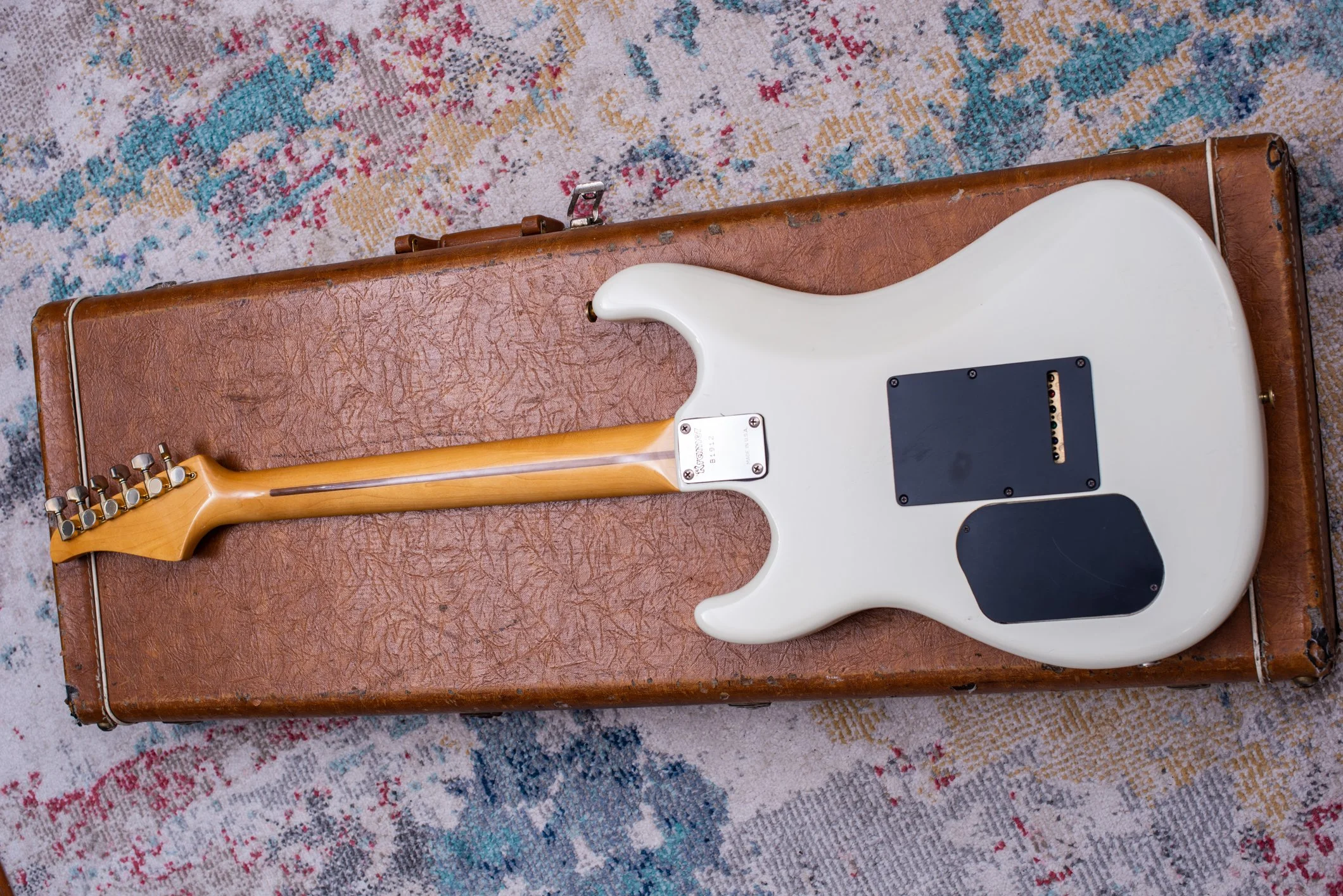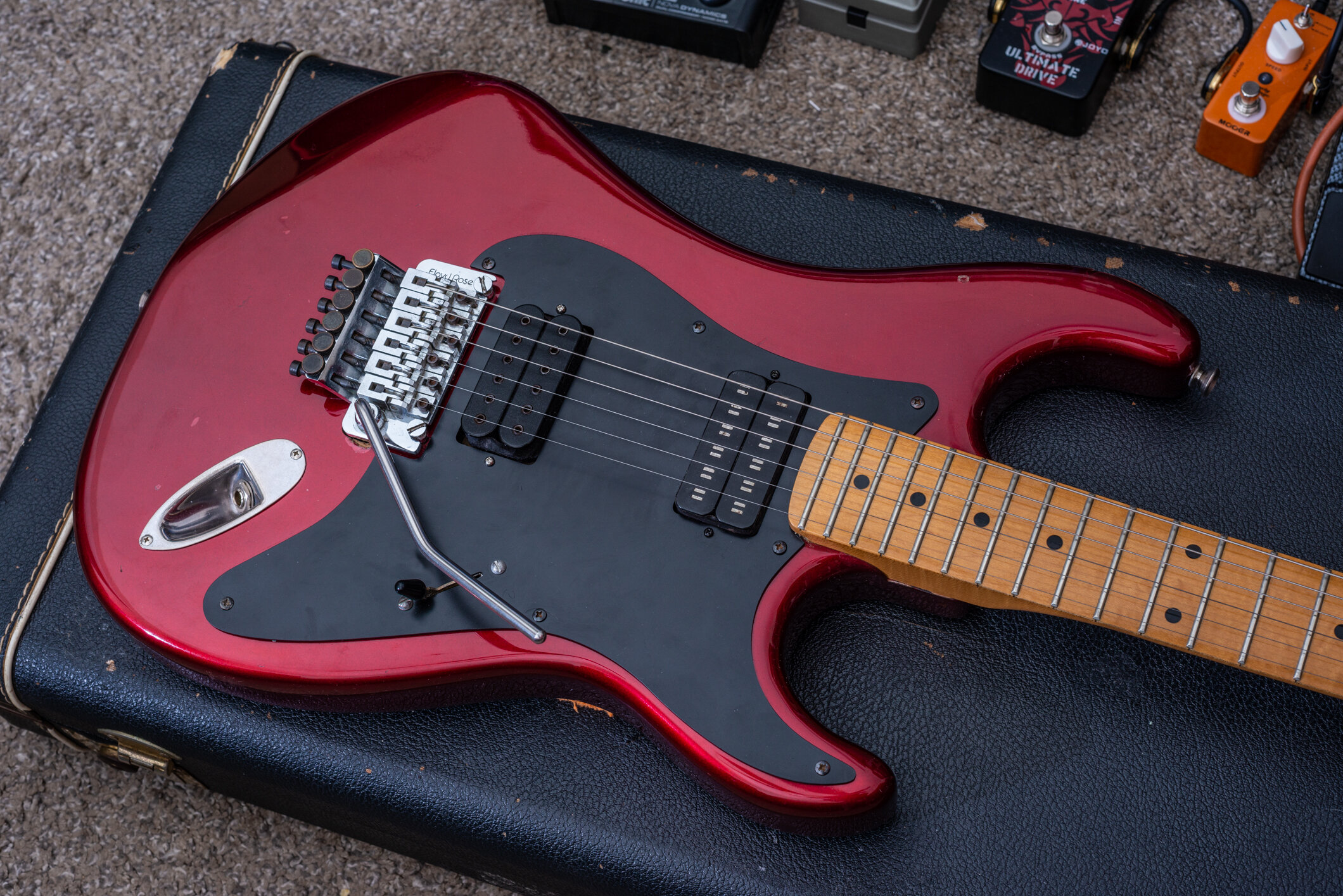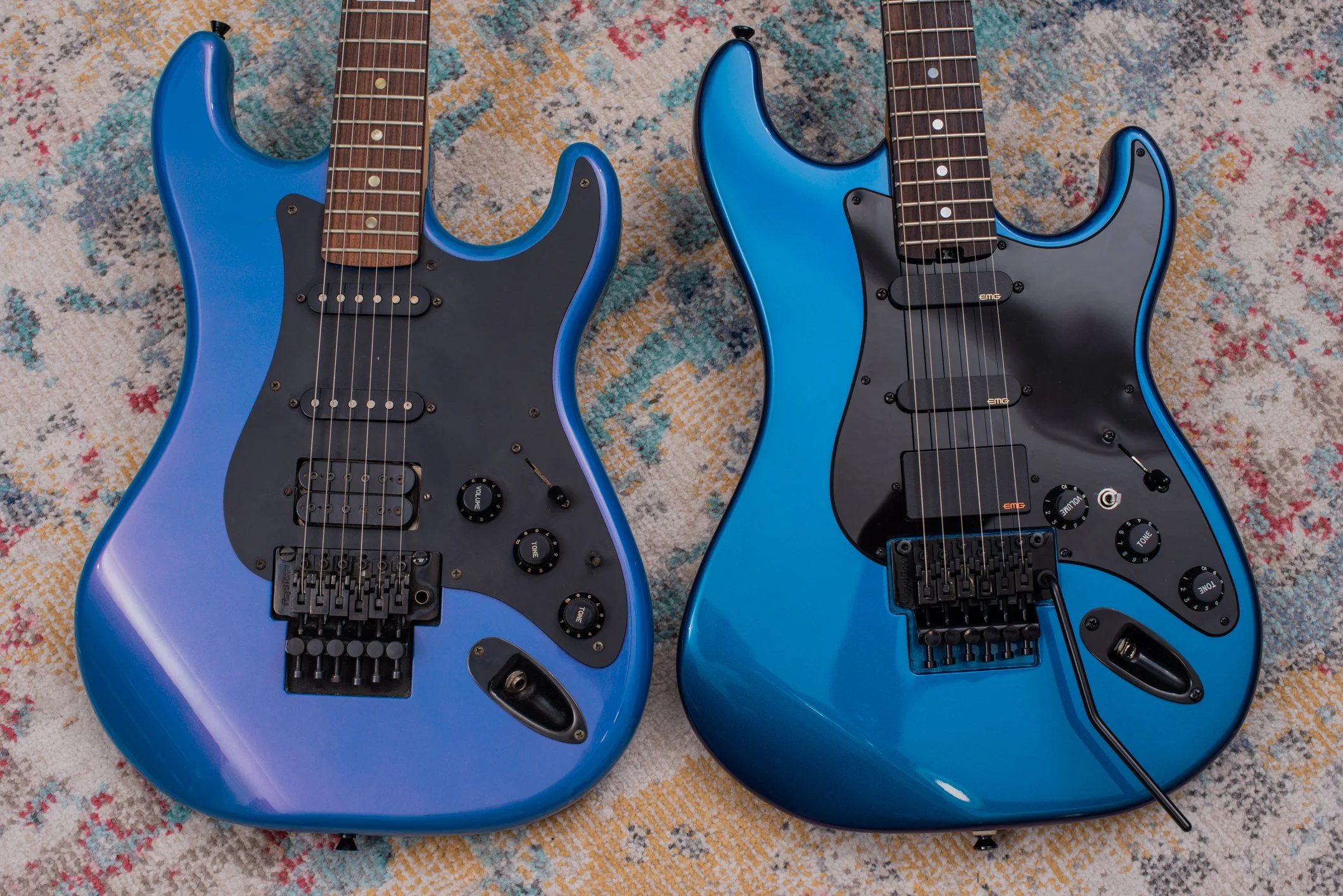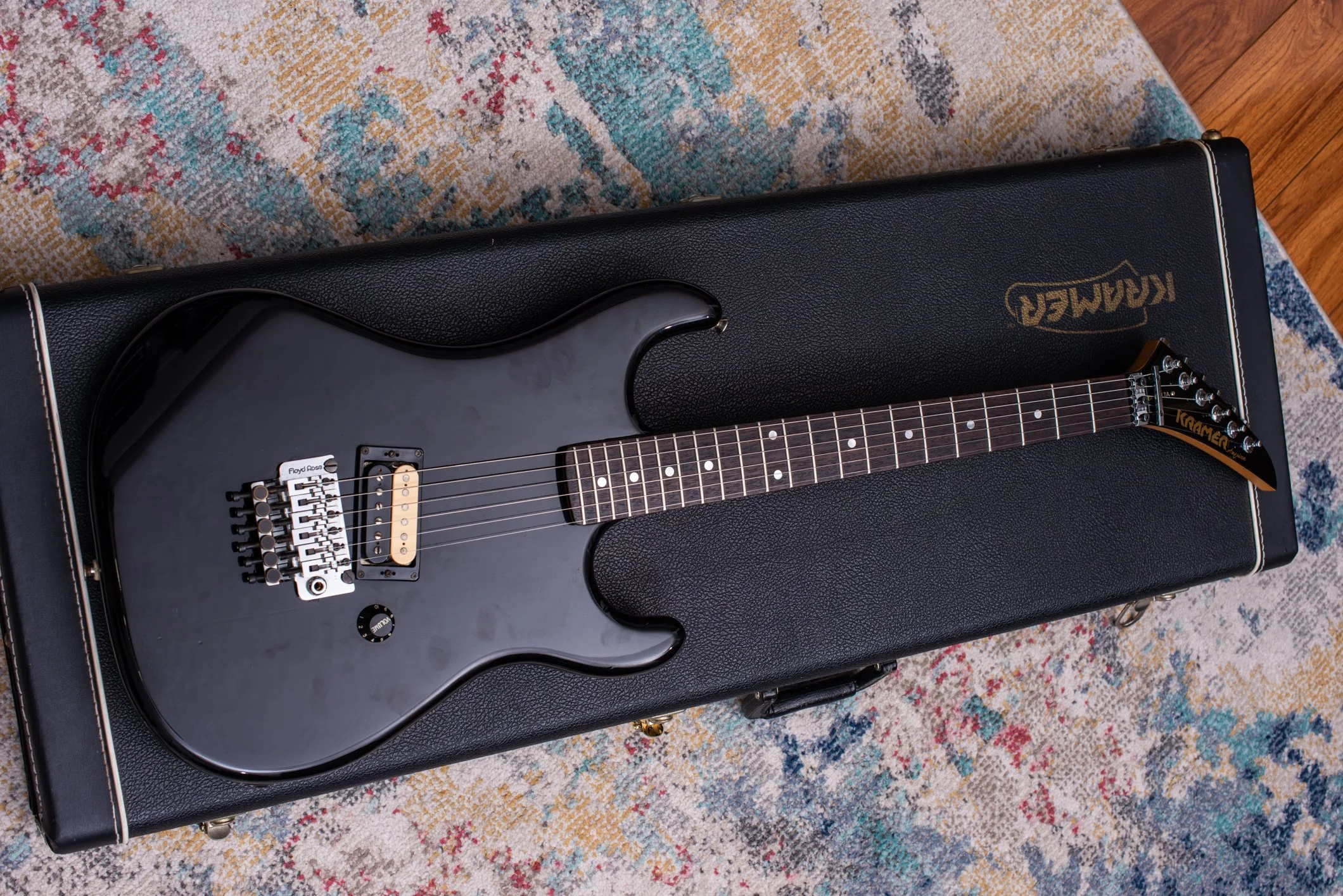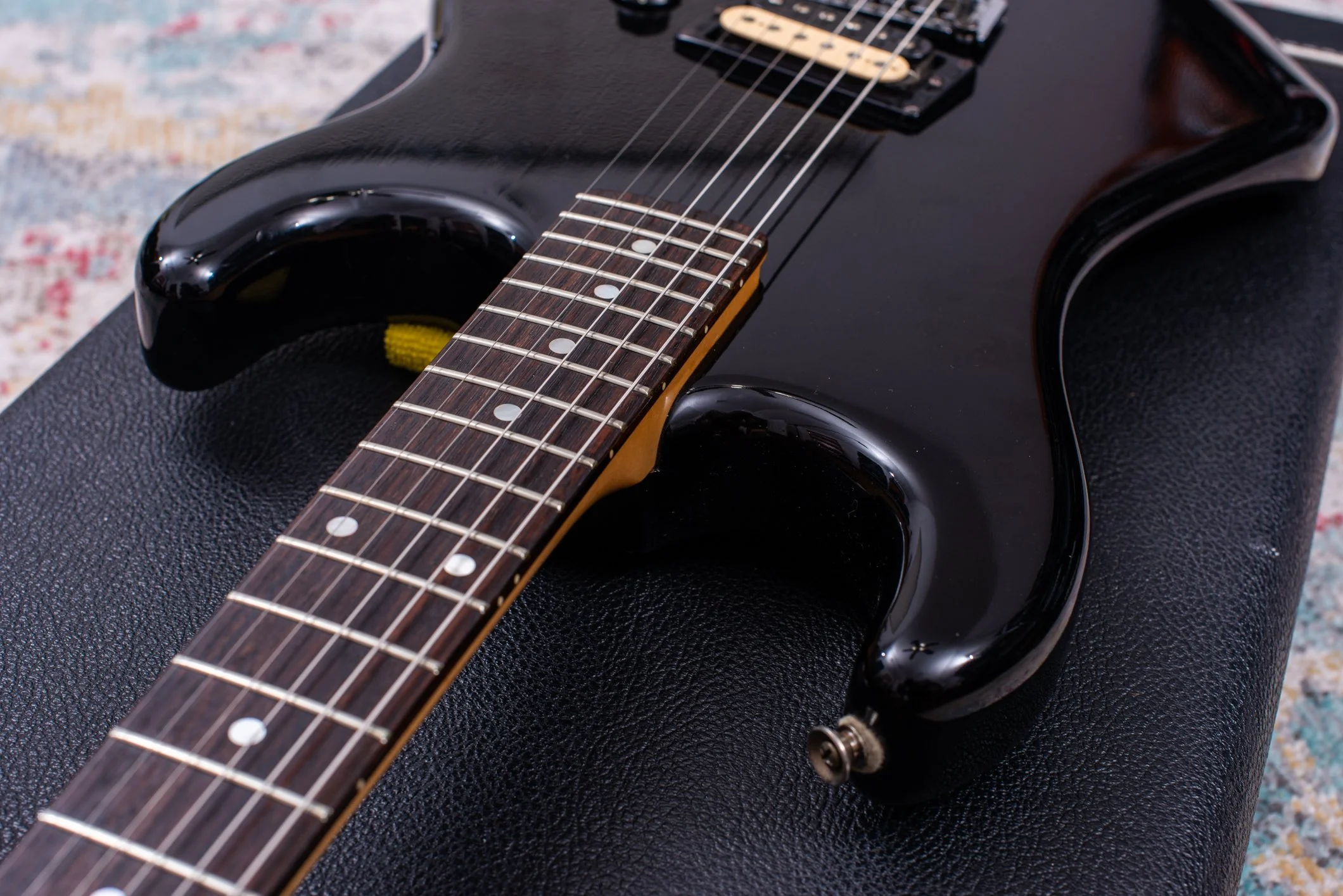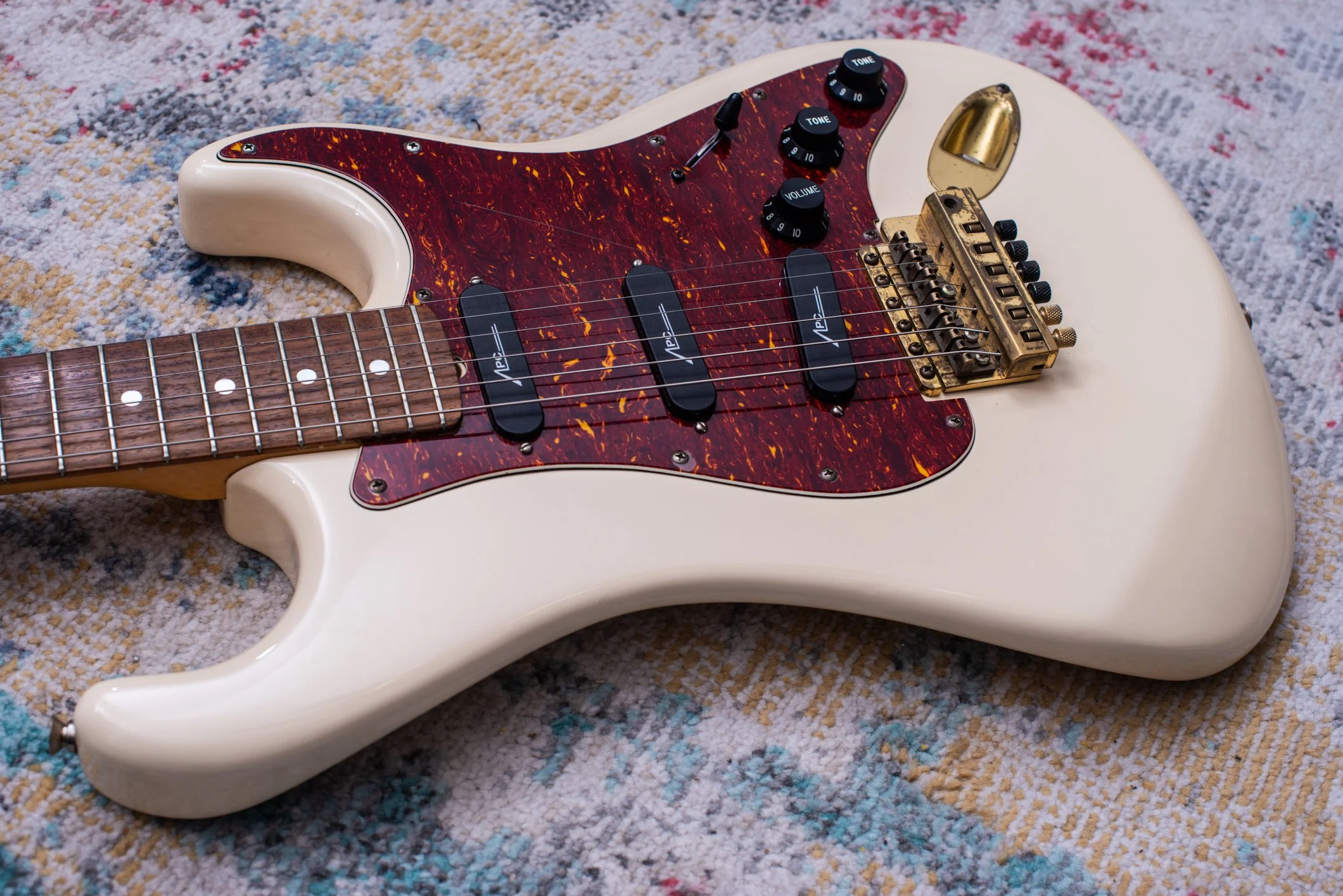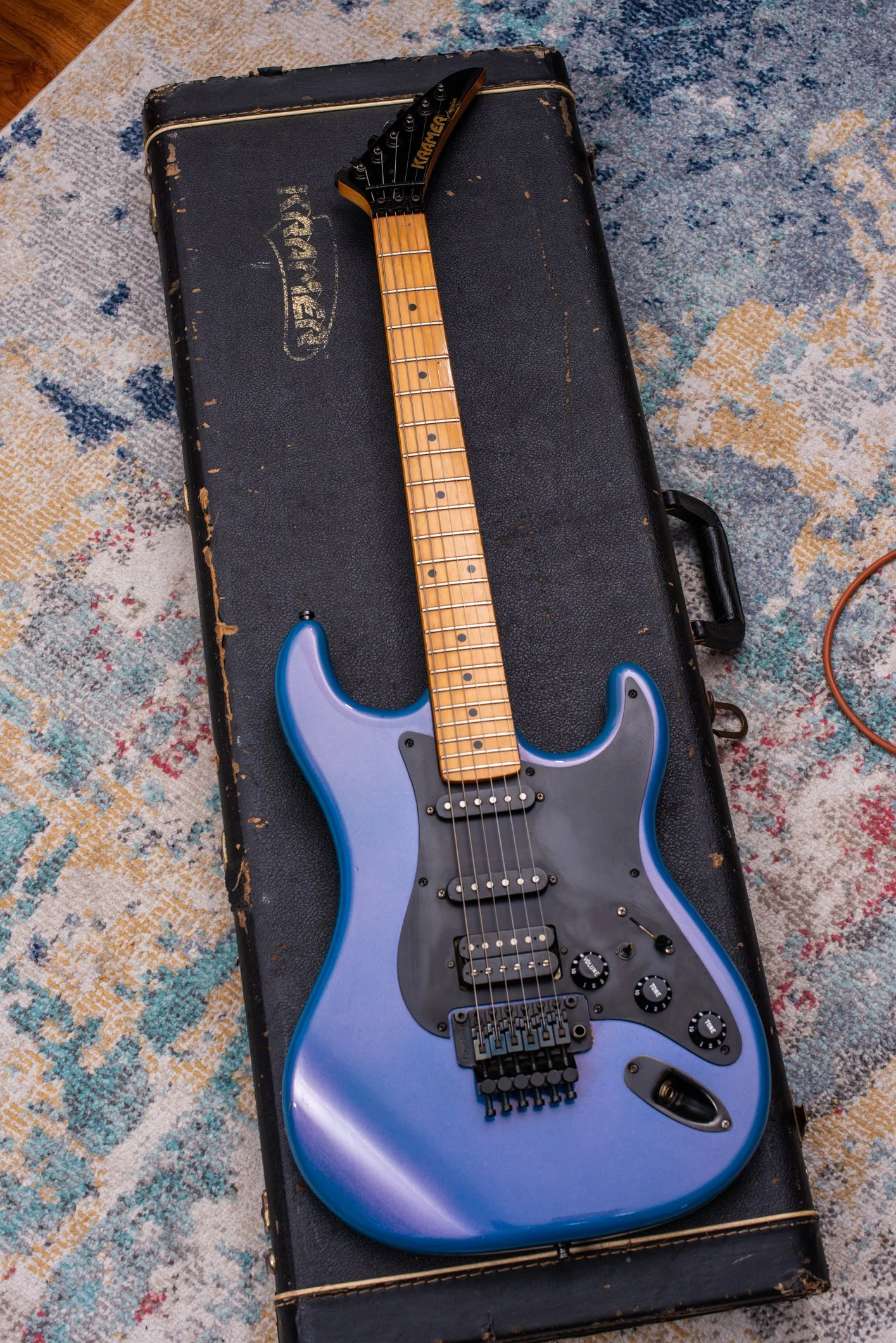This will probably be my last snag of 2025, which in a strange change of pace for me is the first year where I sold more guitars than I bought (!). I still have far too many and plan to let more go in 2026, depending on market conditions of course.
I’m a big fan of these 12th fret inlay Kramer necks, so when this popped up on Reverb I threw out a fair offer and I was thrilled that it was accepted.
It’s in really great condition, with the most important part (the neck) in nearly spotless, mint condition with no fret wear at all. It has a smooth, light gloss on the back and a relatively flat fretboard by Kramer standards.
The body also looks great, with one small chip by the forearm at the edge of the body being the only obvious sign of use - I bet whoever owned this was upset when they bumped into a table or whatever caused that, since it is otherwise so well taken care of.
Pickups are the standard JB and Jazz combo, and since this is a true Imperial 7/8 body there are no extra holes drilled like the more common Sustainer bodies from this era (which often become “imperialized” when their Sustainer electronics fail). Another sign of the great condition is the Floyd, which hardly has a smudge or any sign of palm sweat on the saddles, which is quite a surprise. Saddles are straight across so I wonder if the intonation was ever set on this, or if the previous owner just set them straight before selling it.
Great guitar to end the year on. See you all next year!
